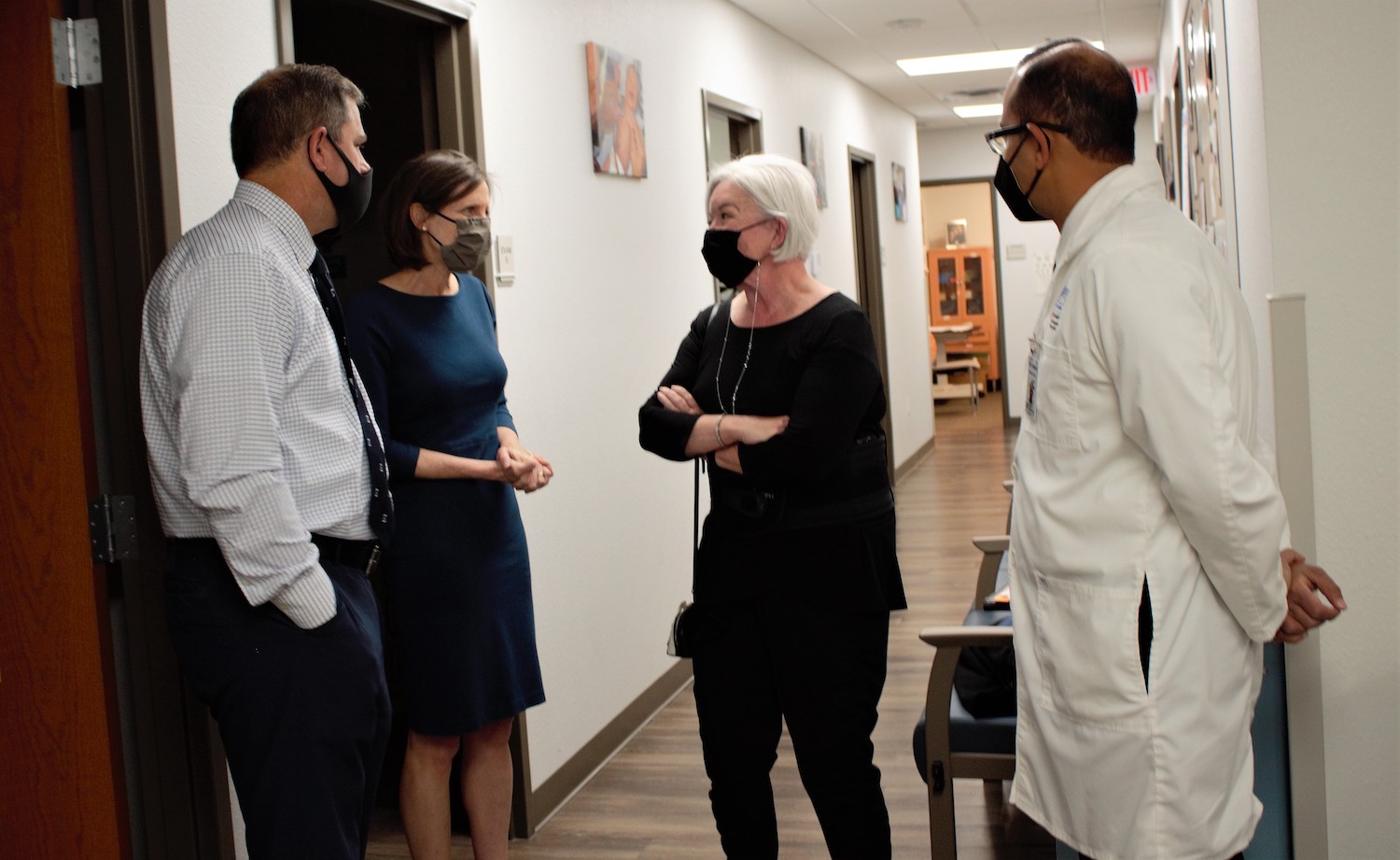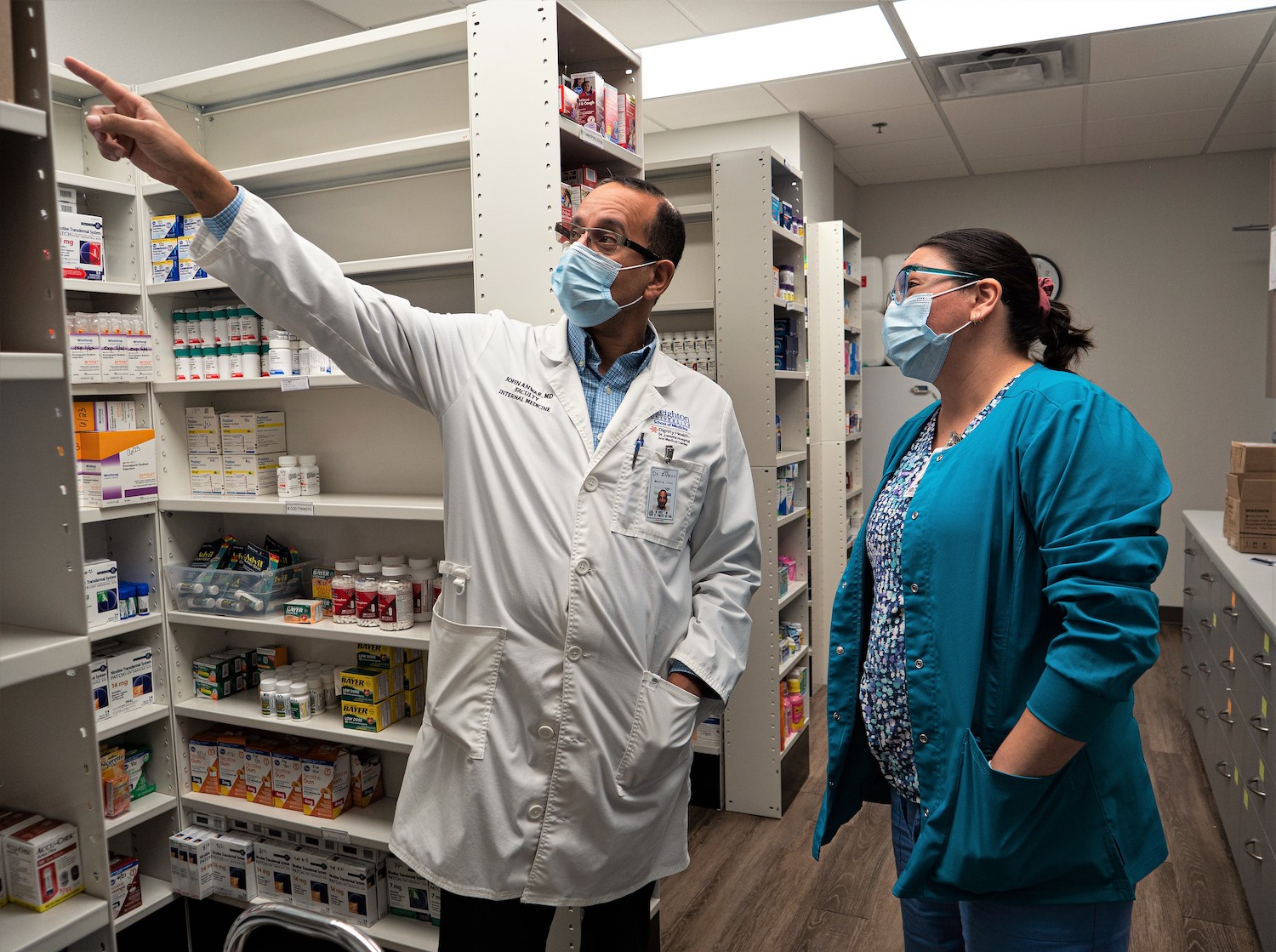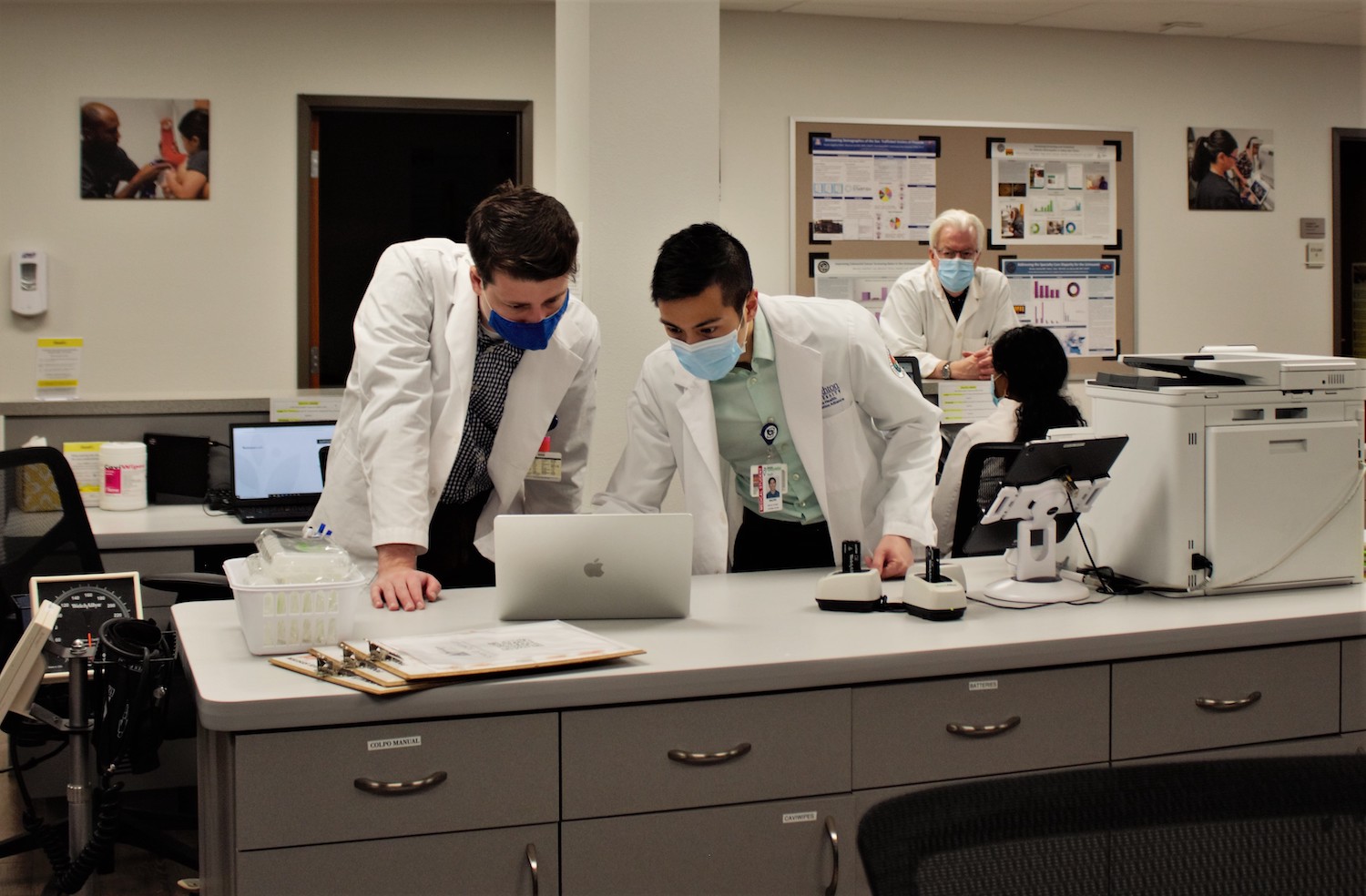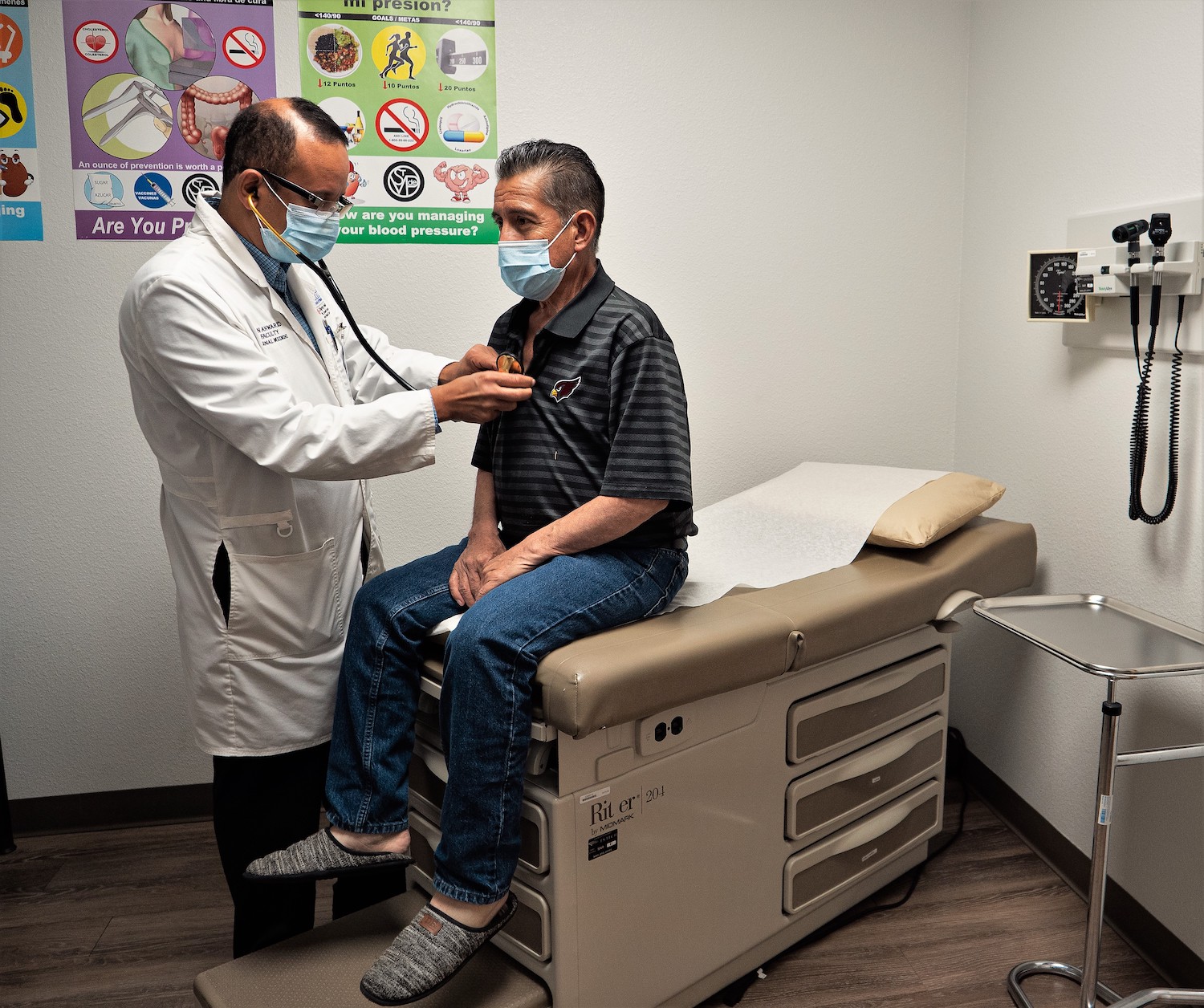
PHOENIX — Reducing the number of uninsured patients who rely on hospital emergency rooms is at the heart of a new partnership between three Catholic-based entities, a collaboration whose leaders say will improve care for underserved populations by transforming the system that directs those patients to more appropriate services.
Officials of the Virginia G. Piper Charitable Trust, the Society of St. Vincent de Paul in Phoenix and Creighton University announced the collaboration during a virtual joint news conference Thursday, March 4.
Fueled by a $10 million gift from the Piper Trust, the partnership will more deeply integrate St. Vincent de Paul’s Virginia G. Piper Medical Clinic into the Creighton Health Sciences Phoenix Campus curriculum.
“It’s time — it’s past time — for higher education, social services and philanthropy to come together and try to solve this issue.”
“The COVID-19 pandemic has highlighted the impact of failing to prepare for and respond to broad, unaddressed health inequities in our community,” said Mary Jane Rynd, president and CEO of the Virginia G. Piper Charitable Trust. “The need is urgent, and our response cannot wait. It’s time — it’s past time — for higher education, social services and philanthropy to come together and try to solve this issue; to join and use our collective capacity to create a healthier, more resilient future.”
“With the collaboration… we will be able to provide improved access and quality of care to those most in need while growing needed skilled medical professionals for Arizona,” said Dr. Randy Richardson, regional dean of Creighton University’s School of Medicine Phoenix Campus.
“We couldn’t be more excited, humbled or grateful to join…this truly historic moment with this extraordinary investment by the Piper Trust that will strengthen and enrich the fabric of our community,” said St. Vincent de Paul Associate CEO Shannon Clancy. “People currently not receiving the services they desperately need will get the high-quality care they deserve, raising the bar for greater access to health care in Maricopa County.”
“We couldn’t be more excited, humbled or grateful to join… this truly historic moment with this extraordinary investment by the Piper Trust that will strengthen and enrich the fabric of our community.”
St. Vincent de Paul’s Virginia G. Piper Medical Clinic has provided acute, specialty and preventative health care services to the underserved and uninsured for over 25 years. In 2018, the Piper Trust provided a grant to help expand the clinic, more than doubling its capacity, including additional patient exam rooms, an intake area, laboratory, ophthalmology room, pharmacy, and procedure room.
St. Vincent de Paul and Creighton have worked together for more than a decade to operate the monthly student-led clinic with support from Creighton School of Medicine faculty, 3rd- and 4th-year medical students and Creighton alumni physician volunteers. The clinic will now serve as the primary teaching facility for 1st- and 2nd-year medical students as well.
Those students will be part of the new $100 million Health Sciences campus Creighton will open in central Phoenix this fall, a move that positions the Omaha, Neb.-based Jesuit university to be the largest Catholic health-professions educator in the country. One of 27 Jesuit colleges and universities in the United States, Creighton enrolls more than 4,000 undergraduates and over 4,000 graduate and professional students among nine schools and colleges. The Phoenix campus is expected to serve more than 900 students. Serving at the clinic is built into the curriculum, with third- and fourth-year students rotating through the facility as part of their training.
“The clinic’s infusion of health sciences students and physician faculty will expand access to preventative, acute and specialty care. It will also allow students to spend more time with physicians while learning to care for underserved patient populations,” said Dr. John Anwar, the clinic’s medical director and an assistant professor with Creighton School of Medicine.
Uninsured patients often turn to emergency rooms for complications arising from unmanaged chronic disease. This not only results in poorer long-term outcomes for patients but increases the cost of care that hospitals and taxpayers must absorb in treating conditions that might have been prevented, Dr. Anwar noted.
Creighton and St. Vincent de Paul leaders will work with health systems in the Greater Phoenix area to improve the efficiency and effectiveness of uninsured-patient referrals between hospitals and the Arizona Safety Net System — a collaboration of more than 40 clinics providing services to those most in need.
A safety net hospital provides care for individuals regardless of insurance status or ability to pay. Typically, these facilities serve a proportionately higher number of uninsured, while relying on a combination of government and charitable sources for funding and absorbing some costs themselves.
Officials of St. Vincent de Paul and Creighton say their entities are well-suited to strengthen the referral system. An international nonprofit dedicated to serving those most in need, St. Vincent de Paul is a leading provider in the Arizona Safety Net System. Creighton, meanwhile, has established strong clinical partnerships with Dignity Health St. Joseph’s Hospital and Medical Center and Valleywise Health, the Phoenix area’s only public teaching health system. Valleywise includes several facilities, among them a medical center, community health clinics and urgent care sites.

As part of the new partnership, the Creighton School of Medicine will hire and employ the Virginia G. Piper Chair in Medicine and chief medical officer at the clinic. The CMO will facilitate communication between Arizona Safety Net clinics and hospital systems.
Meanwhile, the organizations will work to develop new practices focused on reducing inequities in the health care system. The Virginia G. Piper Fellowship in Health Disparities will provide research and input toward that end.
Participants see all this giving significant benefits to patients.
No longer substituting the ER for a primary care physician or specialist will allow patients to avoid returning to the ER for non-emergencies, according to Dr. Anwar.
As part of the university’s program at Dignity St. Joseph Hospital and Medical Center, Dr. Anwar said he often sees patients with cases, such as hypertension, that can be treated more effectively and at far less cost at the Piper Clinic, where he assures them the latter is where they should be all along.
“We tell them, ‘This is your home. You don’t have to rely on a 2-week prescription written at the emergency room.’ And guess what? They never go back to the emergency room,” he said.
Clancy said the transition for a patient can be life-changing.
“Some of these people haven’t had access to care for their entire lives,” she said.
Phone calls and emails to the Arizona departments of Insurance and Health Services did not produce any figures on what the problem might be costing the state. But the U.S. Census Bureau reported that in 2019 — before the pandemic hit — 10.4 percent of Arizona’s 7.3 million residents were without health insurance while 13.5 percent of the state’s population lived below the poverty level. Nationally, those figures were 8.8 percent and 10.5 percent, respectively. Results are based on family size and income, according to the bureau. For example, a family of five including two parents, two children and a great aunt whose total income is less than $31,275 is considered below the poverty level.
Meanwhile, studies by various agencies, such as Kaiser Family Foundation, are still assessing the pandemic’s effect on health insurance nationwide.

From an educational perspective, the clinic is seen as an invaluable tool to hone one’s skills.
“When you’re in a clinic, you get to see the reality of medicine,” said third-year medical student Calvin Fairbourn. “You get to see how people really live and function with these problems…unlike in the textbooks, where the answer is often, ‘prescribe this medication, take this patient for surgery, (or) give an MRI or an ultrasound. These patients don’t always have that opportunity. Being able to be here offers a chance to explore how the real world operates and how doctors have to make do and find ways to help their patients in ways you never learn in school.”
Perhaps more importantly, he said, the experience allows students, faculty and volunteers to fulfill Creighton’s Jesuit values by caring for the most vulnerable.
“When you’re in a standard clinic, you get 10-15 minutes with a patient — in and out the door, Here, you get to spend 20-30 minutes with (them). For so many people, this is their only opportunity to get medical care. To be able to take the time with these patients and really explore their problems and hook them into Creighton’s system. It’s everything you could ask a volunteer clinic to be,” he explained.
University President the Rev. Daniel S. Hendrickson, SJ, PhD, called the approach “a perfect illustration” of Creighton’s mission.
“The stability, dignity and hope we can offer patients at St. Vincent de Paul’s Virginia G. Piper Medical Clinic will touch countless lives, including physicians and health professions faculty and their students,” he said. “The experience will affirm firsthand that medicine is a sacred calling, and they have been selected to help God’s people in their moments of greatest need.”







